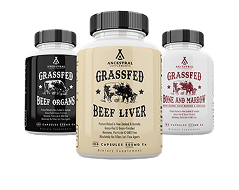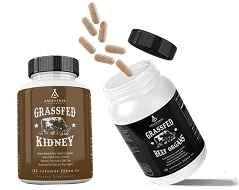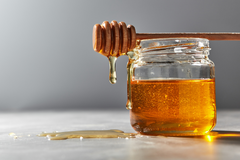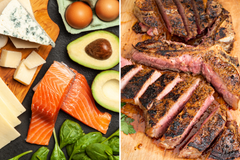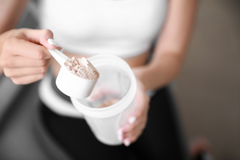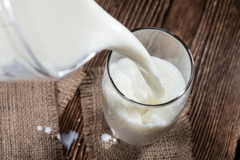How to Track Your Carnivore Diet Macros for The Best Results

The carnivore diet is a very straightforward diet. Just eat meat and that’s all, right?
But beneath that simplicity, there's still a need for balance.
To make this diet work for you, you'll want to get the right mix of carnivore fats, proteins, and carbs. Your body still needs its macros.
Additionally, you need to make sure you’re getting the right nutrients from different types of meat.
In this guide, we're here to help you track your carnivore diet macros for better results as simply as possible.
But before that, let’s cover the basics.
What Are Macros in the Carnivore Diet?
Macros stand for macronutrients, which are the essential nutrients your body needs in larger quantities.
These macros include fats, proteins, and carbohydrates.
Now, you might be thinking: "But I thought the carnivore diet was all about meat?"
You're absolutely right! The carnivore diet is primarily centered around meat, and that's where you'll get the huge share of your macros.
But here's the thing: even on a meat-heavy diet, it's important to balance your macros to stay healthy and fully reap the benefits of the carnivore diet.
But in the carnivore diet, protein is the leading macro.
Protein is beneficial for many bodily functions, including muscle growth and repair, hormone production, and immune system support.
Because here’s the thing: even our ancestors, who didn't have the luxury of modern diet plans, managed to maintain a more balanced diet than you might think.
Macros are the building blocks of nutrition that your body needs, so even if you’re on a carnivore diet, proper balancing of your macros is still important.
What Are the Carnivore Diet Macro Ratios?
We talked about the three main macros that your body needs: protein, fat, and carbohydrates.
But on a carnivore diet, how much of these three should you eat?
Let’s start with carnivore fats.
Fats
In the carnivore diet, fats are a huge percentage of your macros — about 70–80% of your calorie intake.
But why?
Fats are not the enemy. They provide a stable source of energy, and on the carnivore diet, they complement your protein intake.
They also play a vital role in absorbing fat-soluble vitamins like A, D, E, and K, which are essential for your overall well-being.
So, when it comes to the carnivore diet, don't shy away from fats. As long as you integrate them properly, fats are actually good for you.
Proteins
Protein is the main macro on a carnivore diet, making up around 20–30% of your calories.
Protein is the building block of muscles and tissues, and it's very important for your body — including repairing and growing cells, producing enzymes and hormones, and supporting your immune system.
With the carnivore diet being meat-centric, you'll naturally get a substantial dose of protein.
Carbs
In the carnivore diet, you’ll have a lower carb intake, aiming for just around 0–10% of your calorie intake.
A low-carb diet is great for many reasons. It helps you maintain a state of ketosis, where your body burns fat for fuel instead of relying on carbs.
Some carnivore enthusiasts even go for an 80/20 carnivore diet. This means 80% fat and 20% protein — no carbs at all.
This fat-to-protein ratio carnivore diet is typically for experienced people on a carnivore diet.
If you feel like you may need a few carbs in the mix (for a little boost of energy or to help sleep), try adding in a handful of blueberries or maybe a little honey here and there.
So, there you have it: the breakdown of carnivore diet macro ratios.
In summary, around 70–80% fats, around 20–30% protein, and keep your carbs low for roughly 0–10%.
But how do you actually calculate these macros for your carnivore diet? We'll dive into that in the next section.
How to Calculate Your Macros for a Carnivore Diet
Calculating your macros for a carnivore diet doesn't have to be rocket science.
In fact, it's quite straightforward once you break it down into manageable steps.
So, let's dive into the process, one step at a time.
Step #1: Determine Your Caloric Needs
First things first, you'll want to figure out how many calories you need each day.
Your calorie requirements depend on your age, weight, gender, activity level, goals, etc.
A simple way to estimate your daily caloric needs is by using an online calorie calculator.
These calculators typically ask for your basic information and activity level to provide you with an estimate of your daily calorie intake.
But if you want a more accurate assessment, consider consulting with a nutritionist or registered dietitian.
Considering your unique circumstances, they can take a more personalized approach and provide you with a tailored caloric target.
Step #2: Set Your Protein Intake
Protein is the cornerstone of the carnivore diet, so it's crucial to get this step right.
You'll want to determine how much protein you need daily based on your body weight and activity level.
A common guideline is to aim for around 0.8 to 1.6 grams of protein per pound of body weight.
For example, if you weigh 150 pounds, your protein intake might range from 120 to 240 grams per day.
Remember that your protein needs can vary based on your individual goals. If you're very active and looking to build muscle, you should have a higher protein intake than normal.
Step #3: Determine Your Fat Intake
On the carnivore diet, fats play a substantial role, so you'll want to allocate most of your remaining calories to fats.
As we said earlier, a common breakdown is around 70% of your daily calories from fats.
To calculate your fat intake, subtract the calories from protein (since protein contains about 4 calories per gram) from your total daily caloric target.
Then, divide the result by 9 (since fats contain about 9 calories per gram) to get the number of grams of fat you should aim for daily.
Here’s an example:
This example means that if you need 2,000 daily calories, you should have 167 grams of fat daily on a carnivore diet.
Step #4: Calculate Your Carbs
The carnivore diet is a naturally low-carb diet, so your carb level has to be very low.
You'll want to limit your carb intake to around 5% of your daily calories.
To calculate your carb intake, subtract the calories from protein and fats from your total daily caloric target. Then, divide the result by 4 (since carbs contain about 4 calories per gram) to determine the number of grams of carbs you should consume daily.
Here’s an example:
This example means that if you need 2,000 daily calories, it’s recommended to have around 25 grams of carbs daily on a carnivore diet.
Step #5: Track Your Macros
With your macro goals in place, it's time to implement them. Start tracking your food diligently and compare your intake to your macro targets.
You don’t have to make this step complicated.
Many smartphone apps and websites can help you log your meals and calculate your macros effortlessly. You can use apps like MyFitnessPal or other meal trackers out there.
You can also track it just by eyeballing the portions to make it simpler.
As you track your macros, pay attention to how your body responds.
Are you achieving your goals? Do you feel energized and satisfied? Are you making progress toward your desired outcomes, whether it's weight loss, muscle gain, or overall well-being?
Step #6: Fine-Tune Your Macros
Your initial macro goals don’t have to be the same forever.
You can be flexible with your macro goals based on your body's responses.
If you're not getting the desired results or notice any imbalances, don't hesitate to make adjustments.
For instance, if you're not getting the desired results, you can slightly increase or decrease your protein, fat, or carb intake.
The key is experimenting and finding the right balance that aligns with your goals and suits your body's unique needs.
Calculating your macros for a carnivore diet might seem daunting at first, but it's a manageable process once you break it down into these six steps.
The Foods to Eat For Each Carnivore Diet Macro
Getting the right macros on a carnivore diet is all about making smart food choices.
Let's explore foods from each food group that can help you achieve your macro goals while enjoying a delicious and satisfying diet.
Fats
Fats are an important part of the carnivore diet. They make up a big chunk of your daily macros and are essential for your energy and overall well-being.
Here’s how to get enough fat on the carnivore diet:
Butter
Butter is a tasty way to get some healthy fats in your diet. You can use it to cook your meat or simply spread it on top for extra flavor.
Fatty Cuts of Meat
When it comes to the carnivore diet, fatty cuts of meat are a go-to choice. They provide you with the protein you need and the fats that keep you fueled and satisfied.
Bacon
Who doesn't love bacon? It's a carnivore favorite and a great source of fat. Just be sure to choose bacon without added sugars or additives for a pure carnivore experience.
Protein
Grass-Fed Beef:
When it comes to protein on a carnivore diet, grass-fed beef is a top pick.
It's lean, rich in high-quality protein, and contains essential nutrients like iron and B vitamins.
Including grass-fed beef in your diet ensures you meet your protein needs while enjoying a delicious meat option.
Wild-Caught Fish
Incorporate wild-caught fish like salmon, mackerel, and sardines into your meals.
These fish varieties are not only protein-packed but also provide a healthy dose of omega-3 fatty acids — which are crucial for heart and brain health.
Eggs
Eggs are a versatile and nutrient-rich protein source.
They're packed with vitamins, minerals, and high-quality protein.
Whether you prefer them scrambled, boiled, or as part of a carnivore-friendly omelet, eggs are a convenient way to meet your protein goals.
Carbs
You can go 100% carb-free on a carnivore diet, and you'd do just fine, but most people prefer to start on a low-carb diet.
Dairy is typically the only type of “carb” allowed on this diet. Here are some ideas for ways to spice it up with diary products:
Milk
Grab a glass of milk with breakfast, or treat yourself to your favorite latte at a coffee shop. Just be sure it’s animal milk rather than almond or oat milk.
Cheese
Cottage cheese is a great snack. It can also be used to spice up a meaty dish. Or, try some charcuterie, but kick the fruit and crackers to the curb.
Sour Cream
Have you tried your scrambled eggs with a side of sour cream before? Legendary. Try it as a condiment to whatever you’re having.
Achieve a Balanced Carnivore Diet
Your macros don’t have to be complicated.
You can just follow this guide, and you’ll make it a hundred times easier for yourself.
But what if we told you there's an even easier way to achieve a balanced carnivorous diet?
That's where we come in.
Our Grass-Fed Liver Supplement is carnivore diet-friendly and packed full of energizing B vitamins, iron, and vitamins A, D, and K in their most absorbable and usable forms.
No matter what diet you’re eating, it’s hard to fill all of the possible nutritional gaps. Nutrient-dense organ meats like beef liver help.




